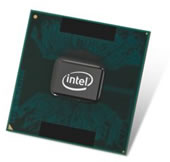It was back in July 2006 when we got our first look at the then brand new Core 2 Duo processor technology. The processor code-named 'Conroe' was initially released in four different flavors ranging from the E6300 (1.86GHz) all the way up to the E6700 model running at 2.66GHz, and from the get go we knew Intel had a winner on its hands.
But, if we were to tell the story right, actually the E6300 and E6400 models were "Allendale" cores that had enabled only half of the full 4MB L2 cache. Eventually, Intel would replace these with revised (4MB L2) versions known as the E6420 and E6320.
About a year later in July 2007, the next generation of Conroe 65nm processors were much the same as the originals with the exception of an increased Front Side Bus speed. Then at 1333MHz we had the E6550 (2.33GHz), E6750 (2.66GHz) and E6850 (3.00GHz) which are the last processors built around a very successful Conroe core.
But for some time now we've been waiting for Intel to move on to a more efficient and highly hyped 45nm fabrication technology, which was released just last month. Within enthusiast circles it was fairly common to hear about the "upcoming Intel Penryn core," but Penryn is actually the new mobile version of the Core 2 Duo, while the "Wolfdale" core is the true Conroe successor, meant to eventually replace all desktop processors in Intel's current product line.
The new 45nm Wolfdale line-up includes the E8200 (2.66GHz), E8400 (3.00GHz) and E8500 (3.16GHz) processors that are expected to operate at lower temperatures - and thus reduce fan noise - as well as receive newer SSE4.1 instructions and ship with a larger 6MB L2 cache.
Possibly even more amazing is the pricing scheme of these new processors as the Core 2 Duo E8400, for example, should sell for less than $200. This is a remarkable price for a 3.0GHz dual-core processor featuring 6MB of L2 cache. The E8200, E8400, and E8500 all feature the same MSRP as the E6550, E6750, and E6850, respectively, so for the same price you get more performance, with the Wolfdales becoming effective replacements for the older Conroe cores.
It should not take pages of benchmark results to convince you that the E8500 is a better buy than the E6850 as that clearly is the case. However, those currently in possession of an E6000 series processor or even older Intel or AMD processors, may still be quite interested to see how much faster these new E8000 series CPUs are, and if they are worth upgrading to.
The non-race is on then, as we compare the 1333MHz FSB Conroe processors to the brand new Wolfdale series to determine just how much of a performance advantage these new 45nm processors can offer.
